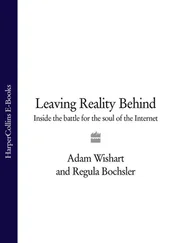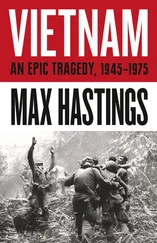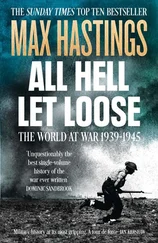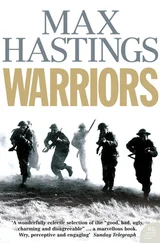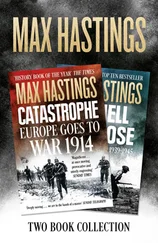He and his crew’s routine missions lasted two or three hours, covering convoys pursuing their sluggish courses towards Japan from Malaya or the Dutch Indies. Their aircraft were primitive by Allied standards. Lacking radar, they carried only a magnetic ship-detection device, together with a single 120-pound depth-charge, for the unlikely eventuality that they found an American submarine. Conducting box searches twice a day, month after month, might seem a dreary task, but it was not so to Ando, who loved to fly. His conscientious crewmen, Kato and Kikuchi, were younger than himself in years, but not in naval experience. They scanned the sea intently, searching for a telltale periscope wake.
After a while, they drank coffee from thermoses and ate their flight rations. These had improved somewhat since a disgusted pilot complained to their messing officer: ‘Every day might be our last! Is this muck the best you can do for our final meals?’ If they needed to urinate while they were in the air, a complex procedure was invoked. Each crew carried a folded oiled paper container which, once filled and sealed with a knot, was handed over the pilot’s shoulder to the magnetic search operator in the rear seat, to be thrown out of a window. Carelessness would cause the container to burst open in their faces. Even in the last year of the war, at Japanese bases in Indochina and the Dutch islands, there was enough to eat and plenty of fuel. Only aircrew replacements were in short supply. ‘We realised that Japan was in a tough spot,’ Ando said, ‘but not that we were in danger of losing the war. We young men believed that, whatever was happening, we could turn the tide.’
Staff officer Maj. Shigeru Funaki felt almost embarrassed that his life at China Army headquarters in Nanjing was so safe and comfortable—good food and no enemy bombing. ‘In Japan, one felt very conscious of what a mess we were in. But in China, our lives seemed so normal that we lulled ourselves into thinking that somehow, our country would come through OK. I was always proud of the fact that, whatever happened in other theatres, in China we remained victorious. For that reason, it seemed a good place to serve.’
Many young Japanese, however, discovered by experience the growing vulnerability of their nation’s empire. In October 1944 Lt Masaichi Kikuchi was posted to the Celebes, south of the Philippines. Having taken off by air from Japan, he and his draft were forced to land on Formosa by engine failure. They remained marooned there for the next two months, among several hundred others in similar plight, enduring a rain of American bombs. When they finally escaped, it was not to the Celebes, now cut off by the Americans, but to Saigon. A sea voyage which normally took a day lasted a week, as their convoy of empty oil tankers lay close inshore by day, then progressed southwards in a series of nocturnal dashes. The military passengers were kept on almost permanent anti-submarine watch, and the convoy was bombed four times.
Huddled wounded in a cave on a Pacific island, Sgt Hiroshi Funasaka looked down on an American camp, brightly lit in the darkness: ‘I imagined the Americans sound asleep in their tents. They might well be easing their weariness by losing themselves in a novel. In the morning they would rise at leisure, shave, eat a hearty breakfast, then come after us as usual. That sea of glowing electric lights was a powerful mute testimonial to their “assault by abundance”…I had a vision of the island divided into adjoining heaven and hell, only a few hundred metres apart.’
None yearned more desperately for Allied victory than prisoners-of-war in Japanese hands, of whom many thousands had already died. Those who survived were stricken by disease, malnutrition and the experience of slave labour. British soldier Fred Thompson wrote on Java: ‘We have just started a new ten-hour shift. How long the chaps will be able to cope remains to be seen. All of us have given up guessing when we will be out—we have had so many disappointments. We are all louse-ridden, but it is one diversion anyway—big-game hunting. Keep smiling through.’
In the summer of 1944, only a few hundred thousand Japanese confronting the Allies in New Guinea, the Pacific islands or Burma, at sea or in the air, had seen for themselves the overwhelming firepower now deployed against their country. Every Japanese was conscious of the privations imposed by American blockade, but the home islands had suffered only desultory bombing. The prospect of abject defeat, which air attack and massive casualties on the Eastern Front obliged Germans to confront long before the end, was still remote from Japan. By late 1944 Hitler’s people had suffered over half their total wartime losses, more than three million dead.
By contrast, a year before capitulation Hirohito’s nation had suffered only a small fraction of its eventual combat and civilian casualties. Japan’s human catastrophes were crowded into the last months of war, when its fate was sealed, during the futile struggle to avert the inevitable. Japan’s commanders and political leaders were privy to the desperate nature of their nation’s predicament, but most remained implacably unwilling to acknowledge its logic. In the last phase, around two million Japanese people paid the price for their rulers’ blindness, a sacrifice which availed their country nothing. After years in which Japan’s armies had roamed Asia at will, killing on a Homeric scale, retribution was at hand.
Japan’s advance across the Pacific and South-East Asia attained its zenith in the spring of 1942, when Australia seemed threatened with invasion, and the British Army was forced back through Burma into India. Long ground campaigns proved necessary to recover from the Japanese Guadalcanal, Papua-New Guinea and other Pacific bases which they had seized. Desultory British attempts to return to Burma were frustrated. The US build-up was slow, in conformity with Washington’s commitment to ‘Germany First’—priority for the western war. America’s Pacific Fleet wrested mastery of the seas from the Japanese only after a long succession of clashes, great and small, which cost many ships, planes and lives. The Allied counter-offensive was hampered by the contest for mastery between the US Army and Navy. The two services conducted separate and rival campaigns against the Japanese, spuriously dignified as ‘the twin-track strategy’.
Despite all these difficulties, by the summer of 1944 the material strength of the US was becoming overwhelming, the Japanese comet was plunging steeply. The trauma inflicted on the Americans and their allies by Pearl Harbor, the loss of Hong Kong, Malaya, Singapore, Burma, the Dutch East Indies, and scores of Pacific islands, had faded. The challenge confronting the leaders of the Grand Alliance was no longer that of frustrating Japan’s advance, but instead that of encompassing its destruction. Strategic choice had become the privilege of the Allies. In the eastern war, this meant that the political, military and naval leadership of the US determined courses, then informed the British.
Early in the afternoon of 26 July 1944, the cruiser Baltimore passed Hawaii’s Diamond Head inbound for Pearl Harbor. Insecure gossip had prompted a crowd of soldiers and sailors to gather at the navy yard. Off Fort Kamehaha, as the big warship lost way a tug nosed alongside, carrying Admiral Chester Nimitz, commander-in-chief of the Pacific Fleet. Then Baltimore moored at Pier 22B, enabling more flag officers and generals to ascend the gangway and form up to salute the cruiser’s exalted passenger, the President of the United States. Franklin Roosevelt, in the last nine months of his life and in the midst of his fourth presidential election campaign, looked about for Douglas MacArthur, the man he had come to meet. He was told that the general’s plane had just landed. MacArthur was on his way from Fort Shafter, and would arrive shortly. Sure enough, cheers and whistles along the Honolulu road heralded America’s most famous soldier since Ulysses S. Grant. MacArthur’s car swept up to the dockside. The great man emerged in khaki trousers, a brown leather air force jacket, Chief of the Army’s cap and insignia. As bosuns’ pipes screeched, he mounted the gangway, saluted the quarterdeck and went below to meet Roosevelt.
Читать дальше


